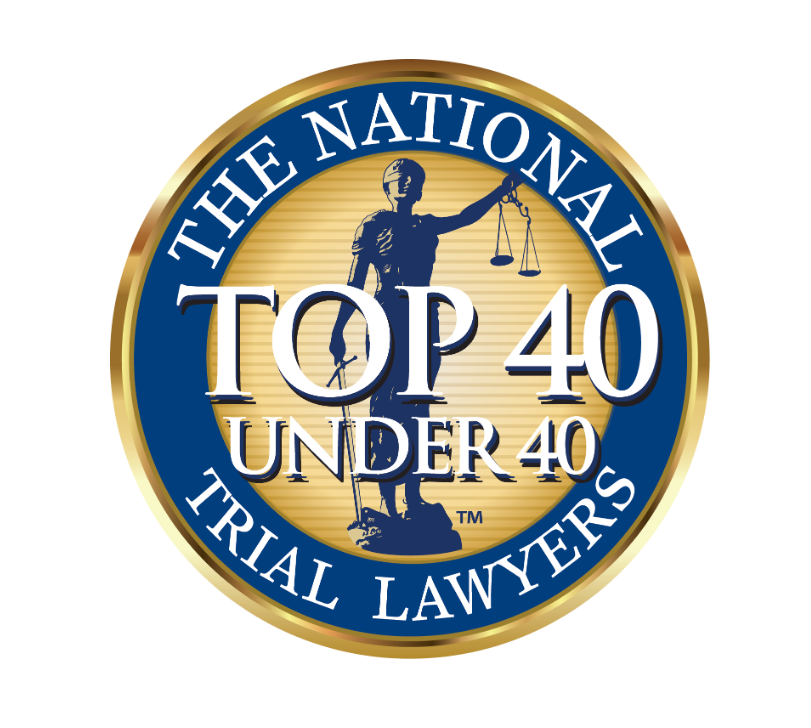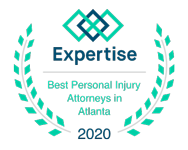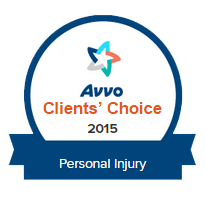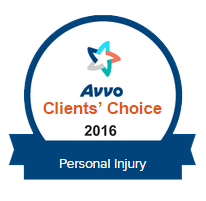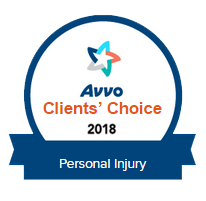You need to determine who is at fault after a crash to recover the compensation you need to pay for your injuries, medical care, time missed at work, vehicle repairs, and other expenses. Knowing what caused an accident and convincing the insurance company their policyholder is responsible is not always easy, though.
To manage this process, you need a lawyer who understands how to document negligence and liability, preserve evidence, and calculate a fair value for your damages. Working with a skilled car accident lawyer is often the best way to ensure you can tell who is at fault and hold them legally responsible.
Schedule a Free Initial Consultation Today!
Negligence and Liability in Atlanta Car Accidents
Understanding negligence and liability is at the heart of building a compelling car accident case.
Negligence
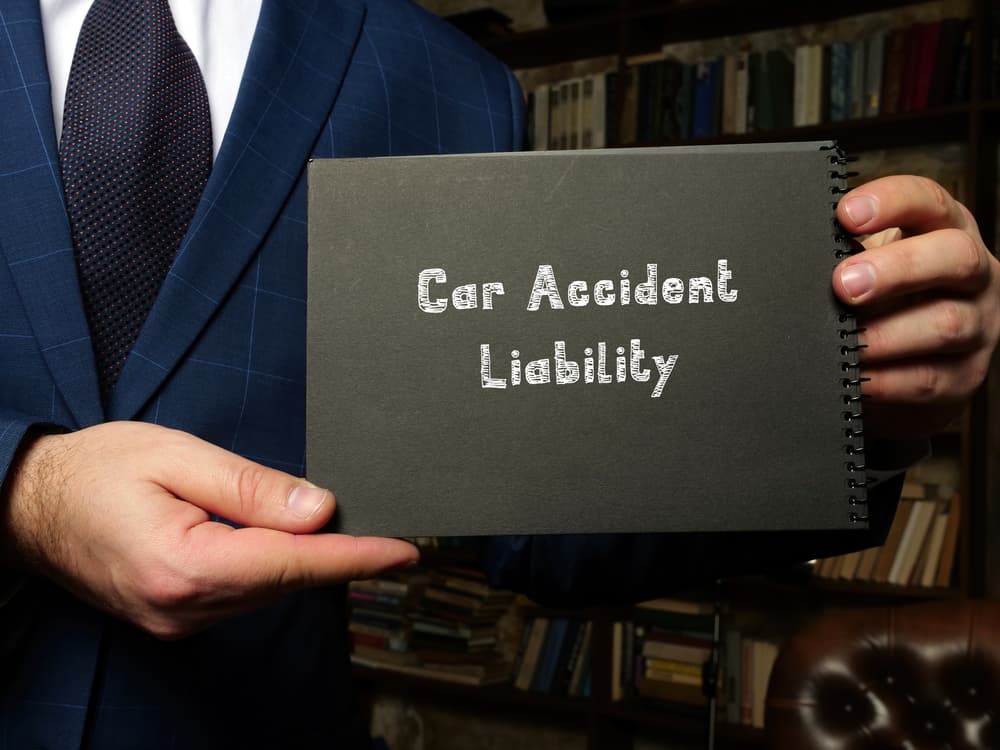
Negligence occurs when a motorist fails to drive their vehicle with a reasonable level of care. They act carelessly or recklessly, often violating traffic laws, and causing a collision. For example, imagine a driver ran a red light and hit you.
You will need to show the driver:
- Had a legal duty to stop at the traffic light
- Failed to do so
- This caused the collision
- You suffered injuries and financial losses
Liability
When a driver causes a collision, they must pay for the damages that occur. Typically, the negligent party is also the liable party under Georgia law.
In most cases, the at-fault driver’s auto liability insurance pays for the victim’s damages. This is because Georgia is an at-fault state for car accident liability. States with no-fault auto accident laws require victims to first seek compensation from their own insurance carrier.
How Do Drivers Cause Collisions?
There are many ways that a negligent driver can cause a collision. Most include violating traffic laws. Some factors that frequently play a role in causing crashes include:
Distracted Driving
Distracted driving—texting, talking on the phone, eating, adjusting radio controls, or using GPS while driving—diverts the driver’s attention from the task at hand. This leads to slower reactions and significantly increases the risk of accidents.
Speeding
Speeding, whether exceeding the posted speed limit or driving too fast for the current conditions, reduces a driver’s ability to stop quickly. It also increases the chances of losing control of the vehicle.
Driving Under the Influence
Driving while under the influence of alcohol, drugs, or certain medications impairs judgment, coordination, and reaction times, making it much more likely for the driver to cause an accident.
Aggressive Driving
Aggressive driving includes tailgating, frequent lane changes, speeding, and exhibiting road rage. These behaviors create unpredictable driving conditions and lead to unsafe maneuvers, causing serious crashes.
Running Red Lights and Stop Signs
Ignoring traffic signals and stop signs results in dangerous T-bone collisions. These crashes often cause significant injuries or fatalities.
Failing to Yield
Failing to yield occurs when a driver does not give the right of way to other vehicles, particularly when merging or at intersections. This failure leads to side-impact or head-on collisions, which can be very serious. This is most common when a vehicle is turning left across an intersection.
Drowsy Driving
When someone operates a vehicle while overly tired or fatigued, it slows reaction times and decreases awareness, leading to accidents. Some drivers may even fall asleep behind the wheel.
Ignoring Road Conditions
Ignoring rain, snow, or fog reduces traction and control, increases stopping distances, and makes it harder to manage the vehicle.
Improper Turns
Making illegal U-turns, turning without signaling, or turning from the wrong lane causes confusion for other drivers, leading to accidents.
Evidence to Show Fault in a Car Accident Case
You will need strong evidence to show what happened if you hope to hold the at-fault driver liable in your case.
Some key pieces of evidence that establish who was at fault include:
- Police Reports: A police accident report contains the responding officer’s observations, statements from the drivers and witnesses, and an initial determination of fault. It will also indicate if the officer issued any citations for violating traffic laws.
- Photographs and Videos From the Scene: Photos and videos of the scene, vehicle damages, skid marks, traffic signs, and any relevant road conditions provide clear documentation of what happened.
- Witness Statements: Recorded statements from those who witnessed the accident provide an objective take on the events leading up to the collision.
- Video Footage: Footage from traffic cameras or surveillance cameras near the accident site can offer unbiased evidence of the accident. If you or a nearby driver had a dashcam, the footage could also provide valuable information.
- Accident Reconstruction Expert Analysis: An accident reconstruction expert will analyze the evidence and recreate the crash to understand why it occurred and who was at fault.
- Medical Records: Medical records documenting your injuries help connect them directly to the accident, demonstrating the impact and severity of the crash.
- Expert Testimony: Medical experts can estimate the cost of your future care and support needs if you have lasting injuries.
- Documentation of Damages: Your medical bills, receipts, and other documents show the expenses and losses you experienced because of the crash.
By gathering, organizing, and presenting convincing evidence, you can build a strong case to show who was at fault in your car accident. This could make it possible to negotiate a fair settlement or win compensation at trial.
Why Is Proving Fault Essential to a Fair Payout in a Crash Case?
Proving fault is essential to securing a fair payout in an Atlanta car accident case. Building a compelling case to show what happened and who is liable is crucial for several reasons:
Determining Liability
In Georgia, a driver more than 50 percent responsible for a collision must pay for the damages. Establishing fault determines who will pay for the injuries, expenses, and losses suffered by others involved in the crash.
Insurance Claims
Insurance companies require a clear determination of fault before they are willing to pay claims. The at-fault driver’s auto insurance provider is responsible for covering the damages, including medical expenses, car repairs, lost income, and other losses.
Without proving fault, it is difficult or impossible to win a payout from the other driver’s insurance carrier.
Compensation for Damages
The compensation you can recover depends on showing how the other party caused the crash. If you can prove the other driver was entirely at fault, you are more likely to receive maximum compensation for your damages.
Legal Recourse
If the insurance settlement will not pay for your losses or if the insurer disputes liability, you need a strong case to pursue legal action. A clear case showing the other driver’s negligence strengthens your case in court, increasing your chances of a favorable verdict and fair compensation.
Avoiding Comparative Fault Reductions
Georgia uses a comparative fault rule, which will reduce the compensation you recover if you contributed to causing the crash. Proving the other driver’s role in causing the crash minimizes or eliminates this concern.
Ensuring Fair Settlement Offers
Insurance adjusters often use tricks or tactics to minimize their company’s payouts. By providing clear evidence of fault, you strengthen your negotiating position, making it harder for the insurance company to offer a lowball settlement or deny your claim.
Supporting Claims for Non-Economic Damages
Proving fault not only helps with economic damages but also non-economic damages such as pain and suffering. You need a strong case to demonstrate the intangible losses you experienced because of the crash.
Strong evidence ensures that you hold the responsible party accountable and that you receive a fair payout. Evidence forms the foundation of a successful claim or lawsuit, leading to just compensation based on the details of your crash case.
Showing Negligence and Liability Is Difficult on Your Own
For a car accident victim with serious injuries, documenting fault and liability requires a car accident lawyer. You cannot handle your case without a car accident lawyer when you face life-altering, long-term injuries.

Severe car accident injuries often require immediate medical attention and ongoing treatment, leaving little time or energy to gather evidence. Your necessary focus on recovery will make it difficult to address the complexities of investigating and documenting an accident.
At the same time, most crash victims lack the experience and knowledge needed to navigate the insurance claims process, including collecting relevant evidence and communicating effectively with insurers. If you must sue, the inexperience becomes even more apparent and creates a bigger challenge.
The emotional stress and trauma following a serious collision can also impair your ability to think clearly and take the necessary steps to document the incident properly.
These combined factors make it hard for a crash victim to manage to prove fault and liability on their own. Hiring a knowledgeable car accident lawyer to handle your case provides the resources you need to develop a convincing case—and win.
Work With an Experienced Car Accident Lawyer to Recover Fair Compensation in Your Case
Hiring an Atlanta car accident lawyer to manage your claim or lawsuit is the best decision you can make if you suffer serious injuries and need help developing a strong argument for fair compensation. The benefits of working with a personal injury law firm include:
Navigation of Legal Complexities
An experienced car accident lawyer possesses an in-depth understanding of personal injury law, including the specific regulations that apply to collision cases in Georgia. This ensures your case proceeds properly and increases the likelihood of a favorable outcome. You can count on your attorney and their team to handle all paperwork, deadlines, and procedural requirements, sparing you the hassle and potential mistakes.
Effective Communication with Insurance Companies
Experienced lawyers manage all communication with insurance companies on your behalf. They advocate for your best interests, preventing insurers from undervaluing your claim or pressuring you into accepting a lowball settlement.
They can effectively counter the tactics employed by insurance adjusters, ensuring that your claim receives the attention and compensation it deserves. They also have proven negotiation experience that allows them to aggressively fight for the money you need based on case facts.
Gathering and Preserving Evidence
Experience with similar cases helps car accident lawyers know which pieces of evidence are most important to proving negligence and liability in your crash. They will preserve and present evidence in a compelling manner, bolstering the strength of your case and maximizing your chances of securing a favorable outcome.
Accurate Calculation of Damages
Your lawyer will evaluate both current and estimated future expenses, ensuring that you seek fair compensation. In addition to economic losses, they consider non-economic damages such as pain and suffering, emotional distress, and loss of enjoyment of life.
Reduction of Emotional Stress
When you work with a lawyer, they will shoulder the legal burdens of your case. This provides the peace of mind to focus on your recovery without the added stress of your legal case.
They provide invaluable emotional support and guidance throughout the process, offering reassurance and empathy during a challenging and overwhelming time.
Familiarity with Local Laws and Procedures
Local lawyers are well-versed in Atlanta’s legal landscape. They are familiar with local insurance carriers, local courthouses, judges, and trends in these cases. This insight enhances their ability to manage your case and fight for fair compensation for you.
If your case goes to trial, you will want this experience on your side. You can trust your lawyer to represent your interests, present a compelling case, and advocate for your future.
Working with an experienced car accident lawyer ensures you have their knowledge, resources, and reputation on your side. You can significantly improve your chances of a just resolution in your case. Most personal injury firms charge no upfront fees, so you have nothing to lose.
Contact an Atlanta Car Accident Lawyer About Your Injury Crash Case
Atlanta Personal Injury Law Group represents collision victims in Georgia with no upfront costs or fees. We will review your case for free and manage your claim based on contingency. A personal injury lawyer from our team can help you understand your rights and determine if you may have a viable case against an at-fault driver today.
Contact us online or call (833) 285-9467 now to get started.
